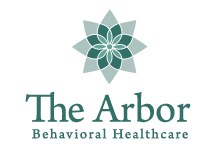Morphine is one of many substances derived wholly or in part from the poppy plant and is therefore classified among the many different types of opiates. While the most widely used opiate is heroin, the use of other opiates such as morphine, codeine, thebaine, fentanyl, and many others, is increasing; therefore there is a growing need for effective morphine addiction treatment and education. There are many myths about the use and abuse of morphine and these myths complicate the treatment for morphine addiction. Morphine addictions first became a problem after its widespread use during the American Civil War and Franco-Prussian Wars where addiction to morphine became known as “the soldier’s disease” or “The army disease.” Morphine is a highly addictive substance that is used for its painkilling effects. In addition to its analgesic properties, morphine is known to produce euphoria and has great potential for tolerance and physical and psychological addictions. Since morphine is often used in a clinical setting, many mistakenly believe that it is not a dangerous drug. Even when properly prescribed and monitored, it is highly addictive and is hard for users to just stop ingesting the substance. Morphine is most commonly injected subcutaneously, but it can also be delivered to the addict through Inhalation (smoking), insufflation (snorting), oral, rectal, (S.C), intramuscular (I.M), intravenous (I.V), and intrathecal (I.T). Even if someone begins using morphine or another opiate for a legitimate medical concern such as pain relief after a surgical procedure, morphine usage frequently leads to addiction very quickly. Untreated, as the addict’s life falls apart and becomes structured around obtaining and using morphine, the damaging effects of the drug take its toll on the whole body and eventually result in death. Withdrawal symptoms associated with detoxing from morphine usually occur within 6 to 12 hours of the last dose. Early withdrawal symptoms are similar to withdrawal symptoms experienced during detox of other opiates and includes watery eyes, insomnia, diarrhea, runny nose, yawning, sweating, severe headache, restlessness, irritability, loss of appetite, body aches, muscle spasms, severe abdominal pain, nausea and vomiting, tremors, and intense drug cravings. During the acute withdrawal period blood pressure increases, and heart rate increases, and there are cases of suicide, heart attacks, strokes, seizures and extreme dehydration from diarrhea and vomiting leading to fatalities during the withdrawal phase of morphine and other opiates. For this reason it is recommended that morphine addiction treatment occur in a facility staffed with medical and addiction personnel that are trained to both deal with any potential life threatening consequences of the detox during morphine addiction treatment and to help the addict begin the process of dealing with the psychological and physical aspects of addiction. For a long time period after the physical addiction to morphine is broken the addict will continue to think about using morphine and other drugs. Many experts estimate that without appropriate treatment and support, morphine addicts experience an eventual relapse rate of 98%. This is yet another reason to encourage the morphine addict to receive professional drug treatment for their morphine addiction.
